Was Emperor Nicholas II a weak-willed ruler who led Russia to a revolutionary catastrophe? Who was guilty in the shooting on January 9, 1905 and the Khodynka tragedy? We spoke with doctor of historical sciences and associate professor in the department of history at Moscow State University Fedor Gaida about the most frequent claims against the last Russian Emperor and how fair and appropriate they are.
—We agreed to discuss with you the “painful points” of Nicholas II’s reign, those aspects or events of his rule that are still the subjects of public disputes and division. I will list the main claims that are most often put forward against the emperor. First: the terrible tragedy at Khodynka Field (the stampede on his coronation day with the death of more than 1,300 people) and the emperor and empress’ attendance the same day at the French ambassador’s ball. It’s often said that such behavior from the young tsar was insensitive and completely wrong. What do you think about this?
—Here we need to clearly distinguish two planes. There is the situation connected with human relationships, issues of sympathy, compassion, and mercy. On the other hand, there are issues of diplomacy and diplomatic protocol. And here one is layered on the other. There was an official reception at the French Embassy, and it was necessary to demonstrate good relations with France. It was quite obvious that if Nicholas II were to ignore this event for any reason, it would have a negative impact on Russian-French relations. As you know, he attended the ball strictly officially and did not linger, spending very little time there.
— Was it totally impossible to cancel this visit? After all, entertainment events are canceled and mourning is declared when large-scale tragic events occur in the country today.
—Official receptions don’t have an entertainment character as such. It’s work. There are some things you have to do, even though something tragic happened at the same time.
—That is, the tsar didn’t dance there and, for example, didn’t drink any champagne?
—It wasn’t expected to be casual there. He fulfilled his duties and received a certain European political resonance. It’s a somewhat different story in the internal Russian context. It’s well known that he sympathized with the victims and helped them from his personal, non-state funds. For example, all orphans received a pension and were brought up at the state’s expense. Everything was done to show that he commiserated with the victims of the Khodynka tragedy.
He had no personal guilt in the events themselves. Of course, he himself did not organize the celebratory events surrounding his coronation. That was the work of completely different people.
—Were those responsible for organizing the coronation punished?
—The Minister of the Imperial Court was dismissed. The Moscow chief of police was fired. There was a hearing identifying those responsible for the stampede that occurred. It was criminal negligence, although it’s clear that there was no evil intent.
You also have to keep in mind that no one expected such an influx of people—it was quite a new phenomenon for Russia. It was a traditional place for festivities and everyone was accustomed to festivals being arranged on Khodynka. Of course, you have to guarantee a certain degree of safety, but no one had faced such a serious excess before.
Although this does not justify anyone, nevertheless, cases of mass stampedes are not so rare at celebrations throughout the world, and not just in Russia. For example, in England, not long before, at the anniversary of the coronation of Victoria, there also was a stampede, and many more people died there. But no one started calling her Victoria the Bloody.
That is, for all the tragedy of the Khodynka situation, it could be used as an instrument of the opposition struggle, or it could not be used. And in this case, of course, it was seized by those people for whom it was important to show that Nicholas II was a “bloody” monarch.
January 9
—The next, very painful point, is the shooting on January 9. In your view, were there any guilty there from among the authorities, and were they punished?
—Yes, of course, there were those guilty among the authorities. The main perpetrator was the tsar’s uncle, Grand Duke Vladimir Alexandrovich, the commander of the St. Petersburg military district, who said he would enforce order at any cost; and he really did not care what the cost was for keeping order. According to the thought of that time—the nineteenth-early twentieth century—the army could be used for maintaining order in internal affairs. At the beginning of the twentieth century, troops in Europe were quite often used to shoot at various demonstrations: in Italy, Ireland, and not long before in France. Probably any general of that time could easily say that if he were faced with some kind of internal disturbance, he would suppress it at any cost.
—But people were marching with icons and portraits of the tsar.
—The situation was, in fact, really difficult. You have to keep in mind that this event later overgrew with numerous myths. The first myth is that the revolution began precisely on January 9, 1905. That is not so: The revolution had already begun at the end of 1904. Myth number two is that Gapon1 was practically the tsar’s instigator and secret police agent who specifically brought the workers out to nip the revolution in the bud.
If we discard these two myths, then the picture begins to change. First, indeed, the government was no longer controlling the situation in the country at the end of 1904. The Minister of Internal Affairs Svyatopolk-Mirsky made concessions to the moderate and liberal opposition, but achieved only the further radicalization of the Zemstvo movement.2 The protestors had been raising questions about changing the political structure and introducing the universal right to vote and a legislative parliament since November 1904. There was a “banquet campaign” in November, where all of these demands were publicly voiced, and, in effect, the revolution began at that moment.
And moreover, the people who organized the banquet campaign at the end of 1904 well knew what they were doing, because it was precisely from a banquet campaign that the French Revolution began in 1848. It was a deliberate copy of those events. The banquet campaign demonstrated the powerlessness of the authorities, and thus called the country to action. Gapon heard the call to action. At that time, he was the head of a large legal working organization in St. Petersburg, which was initially created under police supervision. Then the police lost control over this organization; and after the founder of this working organization, the head of the Special Police Department Sergei Zubatov was dismissed, Gapon didn’t work for any police anymore. He had kicked all of the police agents out of his organization long before the January events. In preparing the petition to the tsar, he was actively helped by liberals, socialist revolutionaries, and socialist democrats; Gapon was in very close contact with opposition groups. This petition was also rewritten and supplemented after the workers, who trusted Gapon as their leader, began to sign it. The petition was framed as a plea, as a request, but what did this request sound like? It contained very radical requirements.
—In essence, it was an ultimatum. There, in categorical order, covered by demagogic rhetoric, they demanded the immediate release of all political prisoners, the responsibility of the ministers before the people, the separation of the Church from the state, and the full freedom of press and assembly.
—Absolutely right, it was an ultimatum, and not just political. In the end, the political system can be changed with the stroke of a pen. But they also demanded a change in the economic system. If they had tried to put the whole list of requirements into practice, then the Russian economy would not have survived, and would have lost its competitiveness.
It was a seemingly peaceful demonstration, but at the same time, the workers were armed with sticks, and not just banners. The revolutionaries, the socialist revolutionaries, who were in the crowd were armed. Together with Gapon was Peter Rutenberg—his friend and a Socialist Revolutionary Party activist. Incidentally, he had gone to Gapon with the city plan and explained to him how to get around the military barriers and break into the Winter Palace.
Thus, the petition practically says that either the tsar fulfills all of their demands, or he is “no longer our father.” The workers were walking with sticks and not afraid of a crackdown. There were tens of thousands of them. Gapon had said in advance that, “They wouldn’t dare disperse us. But if they dare, then we don’t have a father anymore.”
When the shooting started, one volley turned out to be not enough, and no one started to scatter at first.
—Nevertheless, that doesn’t change the savagery and tragedy of the incident.
—No, of course not, but it explains that the situation was provoked. The authorities, of course, acted extremely poorly and cruelly, but at the same time, they were facing a dead end. They were first driven into a dead end, and then forced to act as they did in the end. What alternative was there in this situation?
—At least not to give the order to shoot right away, especially since there were children and women.
—There were not only women and children there. There were also police marching in the first row, because they were guarding the demonstration. The crowd moved towards a rank of soldiers, and it was commanded to stop and was warned that there would be further shooting. The crowd didn’t stop. What could the troops have done next? They acted according to regulations, and couldn’t allow the crowd to draw nearer than the distance stipulated by their regulations; because if they allowed the crowd to come closer, the troops would lose the lead, and the crowd would simply crush the line of soldiers.
—Were there any warning shots fired into the air?
—There were warning squads, but no shots fired. But shots rang out after the unsuccessful attempts to disperse the cavalry. And the first bullets were taken by the police. The soldiers used weapons in a situation where the demonstration, protected by the police, was coming towards them. This was already a chaotic situation. The soldiers had only one alternative: to not shoot and disperse.
—Couldn’t they have given the soldiers other instructions?
—What instructions?
—For example, to fire warning shots into the air, to open fire only after the first row of soldiers was breached. That is, to act more tenuously?
—In the Russian Empire—no. No one could allow anyone to break through the line of soldiers.
—But why was it impossible to at least shoot off a few warning shots into the air?
—Although it’s sad, it probably wouldn’t have changed anything.
—But why?
—Alright, let’s simulate the situation.
—At least the women and children could have left.
—No. Gapon, who said they wouldn’t dare fire, and that everyone should go to the Winter Palace, was leading everyone.
—So they began to shoot into the air. Gapon’s words were disproven.
—When they began to shoot, it only took a couple of volleys at close range for the crowd to waver and begin to disperse. So, neither shots in the air, nor a bloodless break through the first line of soldiers would have done anything.
—Perhaps, then there wouldn’t be any wild impressions of cruel and unprovoked shooting. The provocative actions of the demonstrators would be clearer. That is, “it’s worse than a crime, it’s a mistake.”
—If they had just broken through the first line of soldiers, and they only then begun to shoot, the impression would be exactly the same; because it was a very sensitive issue for the demonstrators: Either we go to the Winter Palace and meet with the tsar, or from now on he is no one to us; he has no name.
—Nevertheless, today, even respected modern historians, such as Modest Alexeevich Kolerov, believe it was an absolutely “senseless and paranoid shooting.”
—I’ve been arguing with him about that for a long time. Modest Alexeevich repeats what was written by Peter Berngardovich Struve (a Marxist and former Lenin comrade, who converted to liberal positions), and he looks at this event with the eyes of someone who has studied a lot.
—And what would have happened if the demonstrators had been allowed to get to the Winter Palace, and the tsar would have come out to them?
—Most likely, the revolution would have continued. They would have occupied the Winter Palace, built barricades, and declared the transfer of power into the hands of the workers and Gapon.
—Was that realistic?
—The fact is that everything was designed exclusively with only one option: Either you fully surrender, or you use force. This was a deadlock for the authorities; they would lose either way. On January 9, the authorities could only have acted as they did, or just leave St. Petersburg and the Winter Palace, and give it over to looting. There were no other options.
It was proposed to the tsar to go out to the demonstrators personally and risk himself, as the crowd included armed revolutionaries—to meet with the workers and vow to fulfill everything written in the petition.
—And if he had come out and said, “Here’s what I can do, and here’s what I cannot do”?
—No, it was suggested to swear that he would fulfill everything written on that paper. He was to go out and capitulate—or don’t go out to them at all. There was no other option.
—Then why do we speak about the fault of the authorities, and about how someone should have been punished, if there were no other options?
—I would say that the authorities’ fault comes second after that of the opposition. The provocation was organized by the opposition. Despite the fact that the government spilled blood, it was the opposition that did everything so that it would be spilled. But the government’s fault is in the fact that it lost control over the situation in the country at the end of 1904.
—In your view, can we say that Gapon’s march was a kind of prototype for the methods of “color revolutions?”
—I think so, yes.
—But now, thank God, they’ve learned how to deal with them without such ruthless shooting.
—By and large, the government was faced then with an unusual phenomenon. We call it the first Russian revolution not just because it was the first chronologically, but also because it was the first experience. No one had ever faced anything like that before in Russia.
—No one was punished for the events of January 9?
—Grand Duke Vladimir Alexandrovich was removed from his post as commander of the St. Petersburg military district. Also, the post of mayor was replaced with that of palace commandant, with Trepov being appointed to the position. He clumsily tried to reach a compromise. That is, he gathered representatives from the workers from various factories and organized a meeting with the tsar. Overall, from the authorities’ point of view, they weren’t to blame. That is, they acted how they should have acted.
—Either way, there is still the impression of some irrationality, and, to be honest, little sanity.
—I am saying that everything was done quite unskillfully. The authorities didn’t want to admit their mistakes. But, I repeat, they were not the main guilty party, and they acted as they were able. I’m not going to justify the authorities, but I’m saying that there are others more to blame in this situation.
—What was the role of the events of January 9 in unleashing the revolution? Did they really serve as the trigger?
—The January 9 revolution, which before that had already begun on the level of educated society, passed to the workers. In fact, what happened on January 9, 1905? The workers joined the banquet campaign.
To sum up, we can say that the opposition acted quite skillfully, but the government acted quite unskillfully. The initiative clearly belonged to the opposition, upon whom was the blood of the workers in the first place, because the revolutionaries knew perfectly well what would happen, and understood perfectly well how it would end. And the blood is on the hands of Peter Berngardovich Struve, who, beginning in 1902 with the founding of the “Liberation” journal, did much to make the revolution begin, even though it was perfectly clear that it would be bloody.
When Gapon was leading the demonstration, did he understand they could begin shooting? Of course he understood it. Did the socialist-revolutionaries and social-democrats, who actively worked with Gapon and helped to compose the petition, understand that they would shoot? Undoubtedly, they understood and were even counting on it.
—Were there any statements or articles from any political writers who would have approved then of the government’s actions, or at least not condemned them? Who would say that the blame lies first of all with the revolutionaries?
—The situation at the beginning of 1905 was that the government had no support at all, from anywhere. In principle, no one stood for it or spoke out in its defense. If we look at what our famous conservatives wrote at that time, they all advocated that it was necessary to seriously change the regime.
Was Nicholas II a weak-willed ruler?
—We often hear about Nicholas II as a weak ruler who could not act firmly and authoritatively. Is there any truth in these words?
—Emperor Nicholas II was an ordinary man of his time, and he had the typical interests for his time. He was an avid motorist, photographer, tennis player, film lover, and so on. He had a pool built in the Winter Palace. He was a normal aristocrat of his time, but without the aristocratic nonsense, and without the deviancy, fluctuation, and tyranny that was sometimes characteristic of the aristocracy.
And this ordinary person found himself in the high post of an autocratic ruler, in a situation rather unusual for him. The thing is that no one expected Alexander III to die so quickly, at the age of forty-nine. You could have safely assumed that he would live another quarter of a century—roughly until 1917. Nicholas II had every chance of growing old as the heir. And indeed, the heir to the throne didn’t even have time to become a general, but remained a colonel. He had very little experience in state activity by this point. I don’t believe that Grand Duke Alexander Mikhailovich, with whom Nikolai II was very friendly, made up the phrase that the young Emperor allegedly said to him, taking up the throne: “Sandro, I don’t know how to rule; I don’t even know how to speak with the ministers.” He really didn’t know how to speak with the ministers—he simply didn’t have such experience.
With all of this, we must bear in mind that the transfer of royal authority in 1894 was one of the most peaceful in the entire history of the Romanov Dynasty. This young man came to the throne at the age of twenty-six in un-extraordinary circumstances, when there was no Crimean War, no regicide, no Decembrists, no palace coup. It would seem everything was wonderful. There was relative calm both inside and outside the country.
—Nevertheless, within a few years, the situation swung towards revolution.
—I wouldn’t say that there is any personal guilt of Nicholas II here. Europe went a long way towards a crisis from 1894, and little depended on him here. Either way, it’s not his fault that the World War began in 1914.
On the other hand, inside the country there was already a certain tradition of domestic policy, formulated under his father. Nicholas II did not change this course. There were advisers he inherited from his father, whom he tried to keep. In a situation where there are already authoritative figures who advise something, he could only gradually gain experience and gradually increase his personal influence.
—What kind of ruler did he end up as?
—I would say this: He truly did gradually gain experience and seriously changed, especially during the first revolution. He became much more careful, and more circumspect and mature in his actions. He started choosing people very carefully.
—It’s often said that he was under the heel of his wife, Empress Alexandra Fedorovna, and that through her acted the evil genius Rasputin.
—No, no. Alexandra Fedorovna’s real influence on politics arose only in 1915, but even then her influence was far from domineering. This is clearly seen in their personal correspondence. The empress gave the tsar a lot of advice, but in reality, he ignored the majority of it.
As for Rasputin, if we look at what advice he gave on domestic and foreign policy, almost none of it was put into practice. Yes, Rasputin tried to play in politics, tried to take the side of this or that power group, or rather, this or that person of authority. But his real influence was small.
—I read somewhere that Nicholas II was so sensitive that he couldn’t even look anyone straight in the eyes to tell them he’d fired them as an official.
—That’s true. He really was so sensitive that he was afraid to directly tell someone he was fired, and if he fired someone, it was “behind his back.” They would receive a packet with his dismissal. It was a trait of his nature. As a person, he was rather shy in this sense, but he periodically had to dismiss someone.
—Does this not testify to his timid nature and poor managerial qualities?
—In the end, what difference does it make how exactly someone executes the decision to retire someone? If it’s hard for him to say it in a personal meeting, then he doesn’t do it in a personal meeting.
—Nevertheless, does the opinion that Nicholas II was a weak ruler, whose rule ended catastrophically, due in part to his personal administrative qualities, have any basis or not?
—I don’t think so. It seems to me the situation was much more complicated than that, and in the end, it wasn’t about the personal qualities of the last emperor. Perhaps the most important thing is that people who are called to governance fulfill their duties. It’s good if they don’t conflict with one another too strongly and if they understand that, having governmental authority and giving an oath to a particular person, they should not act treasonously in regard to this person. But statesmen of the early twentieth century often behaved precisely this way. There is a significant number of examples when a minister could have spread slanderous rumors about the emperor, while holding a high governmental post. I’m not even talking about after they were sent into retirement.
—But anyways, what happened after the death of Alexander III? Why did the situation go downhill, and why was there a kind of “defrosting?”
—It’s not about the death of Alexander III, but the policies that he pursued, because if you pursue this policy of freeze-out, excluding any participation from society in the political sphere, but at the same time you have universities that constantly nourish these societal powers, then the situation will ultimately be a deadlock. What do we have in Russia at the turn of the nineteenth to twentieth centuries? A rapidly growing economy and industry, and a rapidly growing number of educated people. These people can’t but be interested in the political sphere—but it was completely closed off from them. It’s the same censorship regime that didn’t allow any discussion of political topics in the press. They were discussed “in the kitchen,” and the more people discussed, the more radical they became. Political views were radicalized, and the authorities, closed off by the censorship regime, didn’t know what was happening. A very sad picture arose here from the end of the nineteenth century, when an abyss opened up between the official and unofficial Russia. And by 1905, the boiler exploded.
—But why did the boiler become full precisely from the death of Alexander III?
—It began to fill up earlier. Public excitement began at the turn of the 1880s to 1890s. We often judge those years on the level of stereotypes. They say Alexander III came in 1881 and enforced order with a rigid hand. Nothing of the sort. After the events of March 1, 1881,3 there was a strong change in the mood in the social environment. Regicide was seen as a terrible, awful, dirty absurdity. This event itself turned the people away from politics and the revolutionary movement. The withdrawal in the 1880s had, basically, a natural character. And the authorities believed it was their accomplishment.
But even during Alexander III’s lifetime the return of the public’s interest to politics began, which the government was not able to restrain. And if the regime had been in a state to build a relationship with these people, then the return to politics would have happened in a more moderate key. But the government didn’t set itself the task of contacting politically educated people, who could no longer not be interested in politics. It was maintaining universities and raising a large number of European-educated people. They were of very different political views, and often quite well meaning, but they were treated like little children. And they were ready for a certain interaction, but not ready for the fact that they wouldn’t be considered at all.
There was a moderate-liberal Zemstvo movement, with which it was quite possible to have a common language. At first they didn’t raise the question of a constitution, but they spoke about the need to increase Zemstvo gatherings and the Zemstvo budget. And this was objectively overdue. It was necessary to increase the Zemstvo budget. They also wanted to have the possibility of organizing All-Russian Zemstvo congresses, to exchange experiences on agricultural issues, firefighting activities, and so on. But the authorities were categorically against it. And people like Struve and the magazine “Liberation” began to intercept the situation.
Then after a quarter of a century of tough politics, the government suddenly decided it needed to make concessions. But this “suddenly” was very expensive, because if you have late concessions, they’re always perceived as weakness. As a result, supporters of more radical approaches took power in the Zemstvo sphere. Instead of the moderate majority, a radical majority suddenly arose, unexpected by the authorities, demanding a change in the political structure. They should have negotiated with the moderates ten years prior, and not with these. It was already pointless with them. Time was lost.











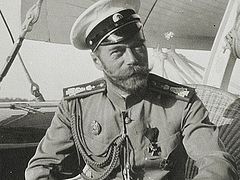
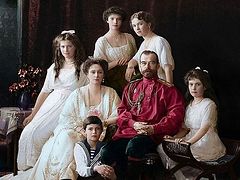
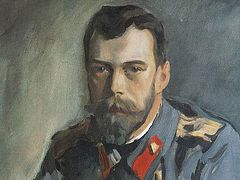
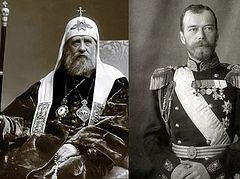
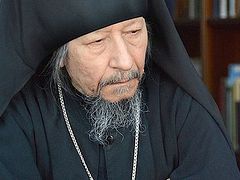
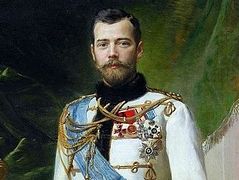
Still afraid to say the J word?
Still pretending that Alexander III was not assassinated? Just like king Ferdinand II of Naples, at the same age of 49, in 1859, immediately before the invasion and the destruction of my Fatherland by the Sabauds...
Still slandering the first of the New Martyrs of the Holy Rus'?
If the Lord concede us anew the Christian Emperor, notwithstanding our misery ānd inability to repent, may he learn from St. Justinian how to deal with the poor, oh sooo pooor, willing marionettes of the devil.